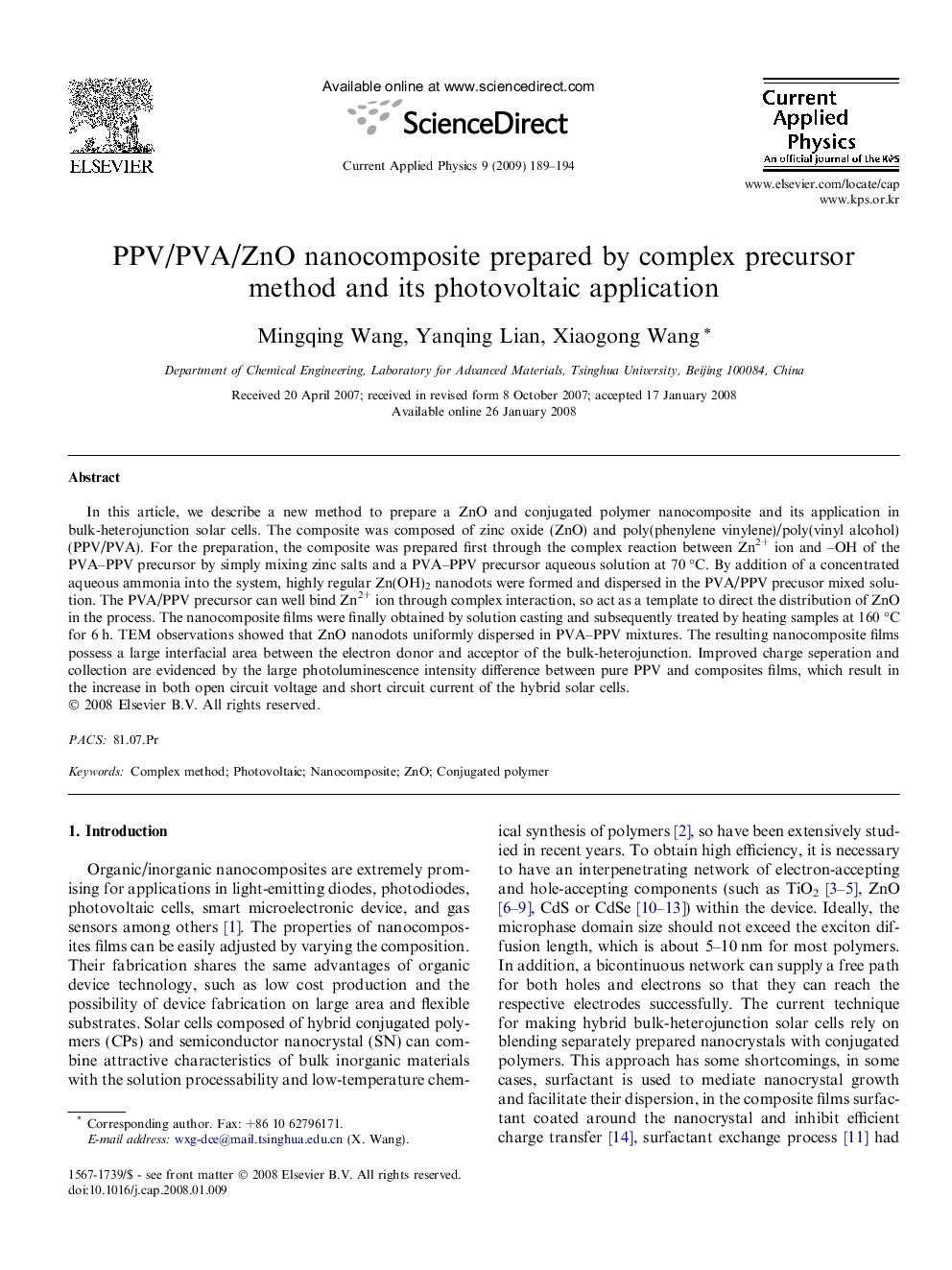| Article ID | Journal | Published Year | Pages | File Type |
|---|---|---|---|---|
| 1789342 | Current Applied Physics | 2009 | 6 Pages |
In this article, we describe a new method to prepare a ZnO and conjugated polymer nanocomposite and its application in bulk-heterojunction solar cells. The composite was composed of zinc oxide (ZnO) and poly(phenylene vinylene)/poly(vinyl alcohol) (PPV/PVA). For the preparation, the composite was prepared first through the complex reaction between Zn2+ ion and –OH of the PVA–PPV precursor by simply mixing zinc salts and a PVA–PPV precursor aqueous solution at 70 °C. By addition of a concentrated aqueous ammonia into the system, highly regular Zn(OH)2 nanodots were formed and dispersed in the PVA/PPV precusor mixed solution. The PVA/PPV precursor can well bind Zn2+ ion through complex interaction, so act as a template to direct the distribution of ZnO in the process. The nanocomposite films were finally obtained by solution casting and subsequently treated by heating samples at 160 °C for 6 h. TEM observations showed that ZnO nanodots uniformly dispersed in PVA–PPV mixtures. The resulting nanocomposite films possess a large interfacial area between the electron donor and acceptor of the bulk-heterojunction. Improved charge seperation and collection are evidenced by the large photoluminescence intensity difference between pure PPV and composites films, which result in the increase in both open circuit voltage and short circuit current of the hybrid solar cells.
